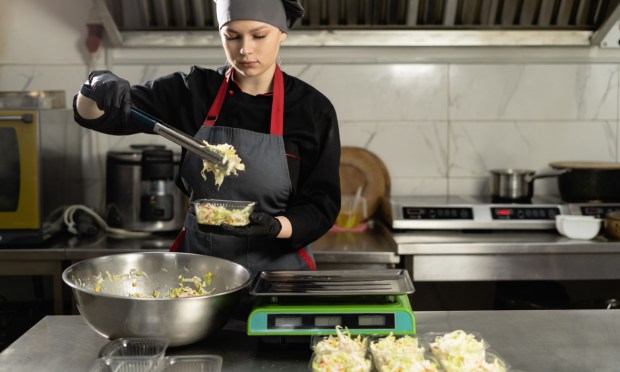
As the restaurant industry increasingly shifts to omnichannel, virtual restaurant platform C3 is seizing on the opportunity to drive profitability by making quick-service restaurants (QSRs) menus hew more towards a consumer-packaged goods (CPG) model than cooking from scratch.
In an interview with PYMNTS, Sam Nazarian, CEO of the foodservice company and hospitality mogul, argued that the industry’s shift towards quick-service restaurants (QSRs) enables new opportunities to drive profitability, especially as many traditional, large-format restaurants lose foot traffic to digital channels.
“How can we get people to go in? A lot of restaurants are now looking to us to help them think through, how do we reshape their real estate? … And how do we do it in a CPG environment?” Nazarian said. “Starbucks is a CPG company. Everything is frozen. … They put it in the TurboChef. You go into Starbucks, and you pick up an egg sandwich or a muffin, but it’s the brand that’s really key. So, for us, it’s the same model.”
Nazarian contended that more operators are turning their focus to QSR, because it is possible to drive more sales for a lower cost, not requiring the hefty real estate investment of full-service brick-and-mortar restaurants.
Certainly, much of the industry has shifted away from in-person dining. For instance, the PYMNTS Intelligence report “Consumer Interest in an Everyday App,” created in collaboration with PayPal , which drew from a survey of more than 2,200 U.S. consumers, found that 24% of those who purchased food from a restaurant in the previous 30 days did so exclusively using internet-connected devices. Plus, another 36% did so both via connected devices and by more traditional means (in person or by calling).
C3 has built the popularity of its brands largely in part through social media channels, enabling them to reach younger consumers and for these brand to serve their identities essentially as intellectual property (IP), making them easy to license out.
“We see a huge untapped market for us to license our brands, specifically to enterprise partners, chains,” Nazarian said.
For instance, earlier this month, well-known casual dining chain TGI Fridays announced that it was adding several C3 brands to its menus in an effort to reach Generation Z and younger millennial consumers.
Indeed, brand recognition can go a long way towards driving restaurant choice. PYMNTS Intelligence study “Digital Divide: Restaurant Subscribers And Loyalty Programs,” which is based on a survey of more than 2,000 U.S. consumers, found that 53% of table-service restaurant customers and 44% of QSR customers say familiarity with a restaurant’s name encourages them to choose that brand when deciding where to order.
C3, for its part, built its brands with a highly digital focus, with them operating primarily as virtual restaurants and relying on its own digital ordering app. Since then, the company has expanded not only into licensing out its brands to other restaurants but also to building food halls and even serving foods on private jets.
Now, the company’s focus is largely on these licensing partnerships, leveraging incumbent brands’ widespread reach while offering these older players a Gen Z audience and digital know-how.
“What we’re providing is a win-win” Nazarian asserted. “It’s a way for us to grow our brands digitally very fast with the right partner. It’s also a huge amount of processional change of the legacy brand we’re dealing with, and how they can become relevant to their franchisees and their consumers and their investors.”